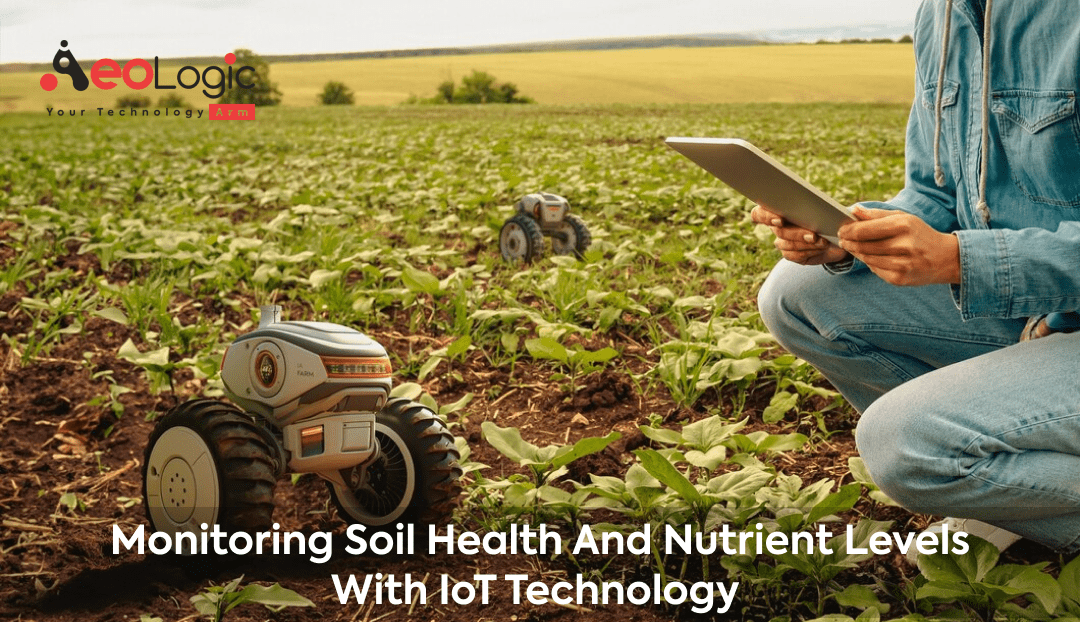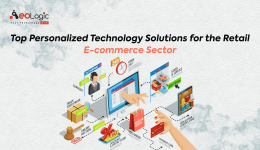Soil is the main component or aspect that determines the fertility of crops in the field. Good soil maintenance and quality would grow better crops with full fertility rate and bad quality and low nutrient levels of soil would reduce the crop’s quality and production. Nitrogen, phosphorus, and potassium are the main components of soil that determine the soil quality and health. But is very difficult to monitor soil health and nutrient levels without any particular and appropriate technology or instruments. Since agriculture is the major factor of the world in the aspect of food also it has a major impact on the world market as agriculture gross production market was US$3.69tn in 2024 and also expected to 5.66% CAGR 2028.
However, there are many places around the world where soil monitoring is a critical issue for crop production. This needs to be resolved with the help of technology and IoT is one of the technologies that can make soil monitoring, health, and nutrient level analysis easier. We will see how Soil Monitoring with IoT can contribute to agriculture and also look for features of IoT and benefits related to the monitoring of soil.
What is Soil Health Monitoring?
In simple words, monitoring of soil health refers to analyzing the soil through soil tests and field observations, and seeing how the soil changes over time. That helps farmers to compare the results from year to year and evaluate the effectiveness of their management. But generally, farmers don’t have equipment that could easily monitor the soil health and provide data on what is needed for soil and how that could be fulfilled to produce good crops. Experienced farmers could only estimate the nutrient level and soil health but can’t completely find the reports accurately. This sometimes results in wrong decisions for soil and makes things worse.
Also Read: How IoT Technologies benefits Agriculture all over World
How can IoT Contribute to Soil Health Monitoring and Nutrient Level Analysis?
This is nothing new to monitoring soil health and nutrient levels with the IoT technology as IoT-based soil monitoring systems have gained considerable attention in recent years. IoT or Internet of Things refers to the collective network of connected devices and the technology that facilitates communication between devices and the cloud, as well as between the devices themselves. IoT-based systems employ various sensors, such as moisture sensors, pH sensors, and nutrient sensors, to collect real-time data on soil conditions.
As mentioned earlier, IoT is a collective network of devices that produces data on soil health that helps farmers to make the right decisions in the terms of production of crops.
Also Read: Farmer Centric Solutions for Agriculture Sector in India
Aspects of Soil Monitoring with IoT
Some aspects of soil health can be measured with the IoT-based monitoring system. Here are the aspects mentioned below.
- IoT sensors can estimate soil temperature by measuring air temperature and other factors.
- The moisture content of soil can also be monitored using buried probes with electrodes.
- IoT sensors can measure different types of solar radiation that play a vital role in photosynthesis.
Features of Soil Monitoring with IoT
IoT technology possesses many features that could be beneficial for soil health monitoring here are some of the key features of IoT technology mentioned below.
Connectivity
Connectivity is a basic feature of IoT technology as it can instantly connect with any connecting devices to provide data and detect problems. This feature could contribute to soil monitoring as it can connect with other digital equipment and provide data to farmers.
Intelligence
Intelligence is the other key feature of IoT technology as it can transform acquired data into information. Farmers can get information about soil health with the help of IoT devices that are implemented to monitor soil.
Embedded sensors and actuators
The IoT relies on sensors to identify and quantify environmental changes to produce data that may be used to report on the environment’s condition. Farmers would be able to know what type of fertilizer they need to use according to the environment as IoT technology helps them to find the report on the environment with the help of sensors.
Identity of Things
IoT has a feature of identity that helps to identify any particular thing with the help of the internet. Farmers can get information about the disease, and components that can’t easily identify manually.
Boost your business with our IoT Solutions
Benefits of Soil Monitoring with IoT
With the above-mentioned some key features of IoT technology, the agriculture sector can get many benefits related to soil health monitoring. Here are some benefits mentioned of IoT-based soil health monitoring.
Good crops production: With the IoT-based soil monitoring, farmers can apply good agriculture techniques, which offer current time information into soil conditions and one of the biggest benefits is a quick response provider.
Initial problem detection: With the IoT-based soil health monitoring, farmers can detect problems in the initial stage so that they can solve problems that are possible such as nutrient shortages, soil erosion, or pest infestations. Prompt detection facilitates timely intervention and averting crop losses.
Remote management and observation: IoT technology has the ability of remote location management and observation that the farmers can use IoT to remotely monitor soil health parameters from any of the locations with the internet.
So, we can say, farmers may monitor soil moisture levels and chemical composition in real time by putting IoT sensors in the soil. These devices can be set up to automatically inform farmers when moisture levels or elements such as nitrogen, potassium, phosphorus, and sulfur in the soil reach harmful levels. Monitoring this data allows them to restore these levels to the required values by providing the necessary drugs.
Farmers can also determine when they have sufficiently watered their crops, reducing water waste. As a result, they can ensure that their crops develop in ideal soil conditions from planting to harvest. To create certain soil characteristics.
Challenges of Soil Monitoring with IoT
With the impressive features and benefits of IoT technology for soil health monitoring, there are some challenges too that sometimes become issues for farmers to use IoT technology. Here are some challenges mentioned below.
- Cost can be a challenge as implementing IoT sensors and other devices could be costly for some lower farmers restricting them from using IoT technology for soil health monitoring.
- Soil monitoring with IoT involves gathering data about the farmers’ fields that need to remain private so that no one can misuse or alter them. So security issues are sometimes the factor that makes farmers hesitate to use IoT technology.
- Learning about the IoT is not easy as it is not technically possible to train all farmers about this technology which sometimes becomes a challenge.
Final Words
The IoT-based agriculture system is replacing conventional agricultural methods with smart farming characterized by enhanced yield. IoT-based system-enabled technological approaches in agriculture also help to assess soil health, soil erosion, the need for fertilizer, the status of soil fertility, and crop quality. Overall, IoT could play an important role in soil health monitoring and in other agriculture practices too. So to increase food production, every farmer must know about this technology and implement it in their fields making agriculture easier and enhancive than ever.
Connect with Aeologic Technologies and set the foundation for a future where every grain sown is backed by data, insight, and precision. Let’s cultivate tomorrow, today.






